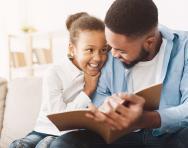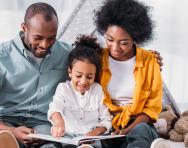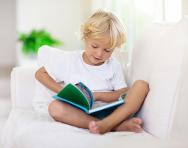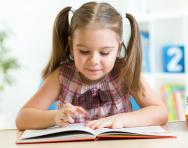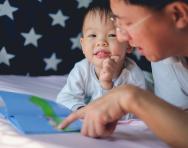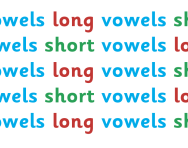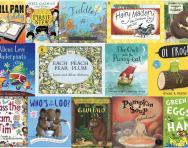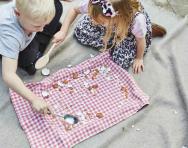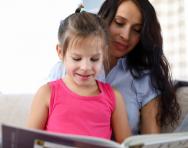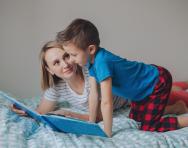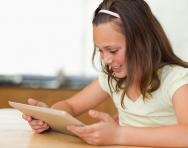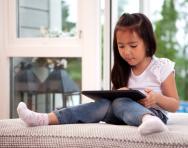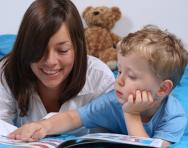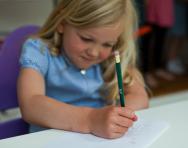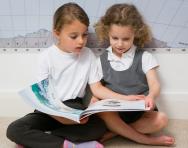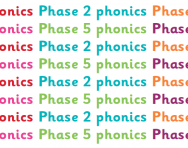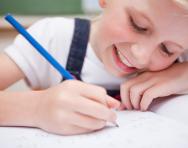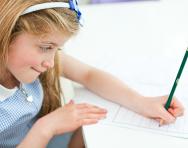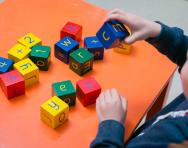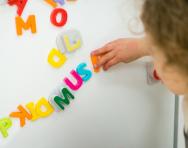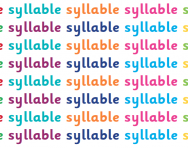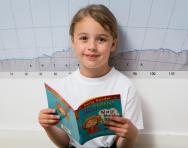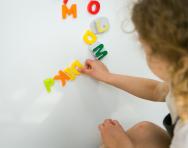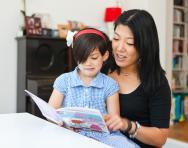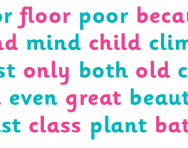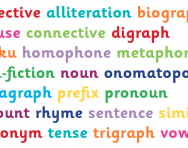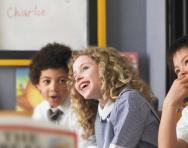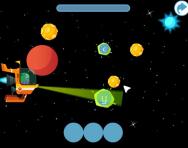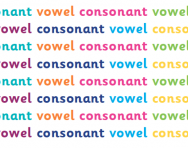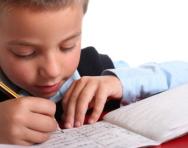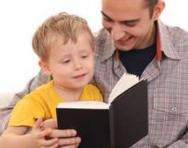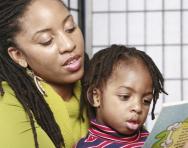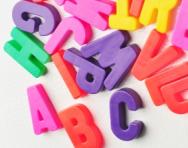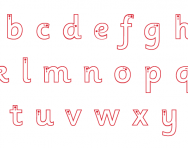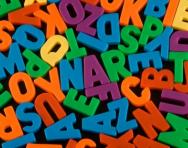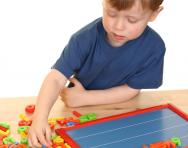Phonics articles
Parents' guide to Phase 6 phonics
Different primary schools use different ways to teach children about sounds and letters, called phonics. But most kids in early years and Key Stage 1 follow a set of steps, or phases, to learn phonics. In Phase 6, they deepen their phonics knowledge and use their skills to help them read and spell. Here, we'll explain what Phase 6 is all about and how you can help your child with it at home.
Parents' guide to Phase 5 phonics
Various primary schools adopt different phonics schemes, which may have slightly different methods for teaching phonics. However, it's typical for children to follow a sequence of phonics phases during the Foundation Stage and Key Stage 1. Here, we explain what is taught during Phase 5 phonics and how you can support your child's learning at home.
Parents' guide to Phase 4 phonics
Phonics is a teaching method used across many UK primary schools. Phonics programmes are often broken down into phases, and this can get a little confusing for parents. We explain what Phase 4 phonics involves and how you can help at home.
Parents' guide to Phase 3 phonics
Phonics is a common method used in primary schools to teach children how to read. It involves linking sounds to the letters or groups of letters that represent them. There are different phonics phases that gradually build a child’s knowledge and recognition of sounds so that they can read and write. Here, we explain what Phase 3 phonics are and how they are taught.
Parents' guide to Phase 2 phonics
Phonics is likely to play a significant role in your child's primary school journey. It helps many children develop the ability to read and spell accurately, often achieved by the end of their second year. Here, we explain what is covered in Phase 2 phonics.
Parents' guide to Phase 1 phonics
Phonics is a teaching method used across many UK primary schools. Phonics programmes are often broken down into phases, and this can get a little confusing for parents. We explain what Phase 1 phonics involves and how you can help at home.
What are short and long vowels?
Although we have five vowel letters in English, each one can be pronounced in different ways and there are, therefore, far more than five vowel phonemes (vowel sounds). Each one has a short vowel and a long vowel form. Understanding vowel sounds is essential for developing reading and spelling skills.
Best rhyming books for children
Listening to repeated sounds, rhythms and rhymes offers children clear educational benefits and helps to make them into readers. Best of all, rhyming books are a pleasure to read out loud! Our pick of the best rhyming stories offers a brilliant selection of family favourites that you'll be reciting for years.
6 literacy and numeracy early learning games
Looking for some quick and easy learning activities to do with your child? In our extract from Five Minute Mum: Time For School, parent and best-selling author Daisy Upton (AKA Five Minute Mum) introduces you to simple, fun five-minute games to support Reception and Key Stage 1 children through their first years at school.
Best literacy resources
Whether your child is just learning to read and print letters or looking for ways to put their creative writing skills to the test, we've rounded up some fantastic resources to help them practise phonics, grammar, story-writing and comic-creating at home. Plus there are loads of different ways to connect with authors and listen to stories.
20 of the best live streams for kids
Help your primary-age child stay educated and entertained with our round-up of the best live streams for kids.
9 reasons kids struggle with reading – and what you can do about it
Not all children take to books easily. If your child finds reading tricky, read our guide to the problems they might be having.
Best word puzzle apps for kids
Help your child brush up on their spelling, phonics and vocabulary skills with these brilliant games-based apps.
Best apps for new readers
Reading doesn't always have to involve books. We've rounded up the best apps for children who are learning to read, ranging from traditional tales to interactive games that will improve their reading as they play.
Best phonics apps for kids
Turn screen time into learning-to-read time and help your child become a phonics whizz with these brilliant tried-and-tested apps for Apple and Android.
Could speech rhythm training help your child learn to read?
You’ve heard about phonics, but what is speech rhythm training and how could it give your child’s reading a head start?
Early years writing
From learning to hold a pencil to getting their thoughts down on paper, learning to write is a tricky milestone for children. We explain how it happens, and how you can help.
7 of the best early reader tools
From interactive games and apps to simplified reading books and learning-to-read devices, we love the early reader tools available to parents and children. Whether you want to motivate a reluctant reader or offer a huge selection of titles to a voracious bookworm, we've picked some of the best options to start your child on the road to a life-long love of reading.
Phonics phases explained
How does your child master phonics, from learning letter sounds to reading fluently? We explain the phases they may follow in the primary-school classroom.
Spelling in Year 3 and Year 4
From homophones to the use of prefixes and suffixes, spelling gets more technical in KS2. We explain what spelling patterns and rules your child will be introduced to in Year 3 and Year 4, and how you can support their learning with worksheets and activities at home.
Spelling in Year 2
A parents' overview of Year 2 spelling patterns, with examples of the words children are taught at the end of KS1 and Year 2 spelling worksheets to help them practise.
Year 1 spellings
Year 1 is a foundation year for spelling, with children being taught important spelling patterns and exception words as well as how split digraphs work. We explain how you can support your child's Y1 spelling learning at home with an understanding of the curriculum and practical worksheets and activities.
Spelling in Reception
How is spelling introduced to Reception-age children? We explain how phonemes and then graphemes are taught in the classroom, and what words children are expected to be able to write by the end of their first year of primary school.
What is a syllable?
Syllables explained for parents, including details of how primary-school children are taught to identify syllables to help them with spelling and reading and understanding poetry.
Common phonics problems sorted
Finding the thought of phonics daunting and wondering how you can support your child in learning to read when you're not really sure how they're being taught in the first place? Reception teacher Niki Jackson shares her phonics tips and advice for parents, highlighting some of the common phonics problems children experience and effective strategies to overcome them.
Teachers' tricks for phonics
Understand more about how children learn about sounds and try some of teacher Niki Jackson's practical tips to help your child with their early phonics learning at home. We particularly like the alphabet cookies suggestion...
Best reading scheme books for early readers
Does your heart sink at the thought of another reading practice session after school? Don't lose heart, says primary school teacher, mum and Reading Chest founder Liz Walker. Today's reading scheme books offer exciting stories, non-fiction facts and loads more. Here's how to make the most of early readers, whether your child has just started to blend sounds or is ready to graduate to 'real' books.
What are exception words?
As your child learns to read you might hear them talk about the 'exception words' they are learning. We explain what exception words are, what role they play in phonics learning and how you can support your child's developing reading and spelling skills at home.
Primary literacy glossary for parents
From adjectives to writing frames, TheSchoolRun's primary-school literacy glossary offers a complete guide to all the concepts children are taught in EYFS, KS1 and KS2 English. Brush up on your own literacy skills, clear up homework confusion and understand exactly what your child is learning at school by reading our basic definitions (with links to more detailed explanations, teachers' tips and examples).
Blending sounds: teachers' tips
Struggling to help your child 'blend' sounds when they're reading aloud? Primary teacher Phoebe Doyle offers tips to help you support their phonics learning and early reading at home.
Best phonics learning tools
Want to practise phonics at home? We’ve picked some of the best games, apps, tools and books to help you reinforce what your child is learning at home – the fun way!
What are vowels and consonants?
We explain what vowels and consonants are and how primary-school children are taught to identify CVC, CCVC and CVCC words, vowel digraphs and consonant digraphs.
What is a letter string?
Learning certain letter strings will help your child with their reading and spelling. Find out about different letter strings and tips to help your child remember them.
What is encoding?
Find out how your child will learn to encode – hear a sound and write it down – and what you can do at home to support learning.
What is decoding?
From the first years of school your child will learn to decode written words and say them aloud. Find out how teachers teach decoding and how you can support learning at home.
What is blending?
As they learn to read, children are taught individual sounds and then how to link them together to form words. By the end of Reception your child will be able to blend sounds together; find out how your child will be taught blending in school and how you can support learning at home.
What is a letter sound?
By the end of EYFS your child should know the sound each letter makes. Find out how your child will be taught letter sounds in school and how you can support learning at home.
What is a grapheme?
Your child will be taught about graphemes as part of their phonics learning journey. We explain what graphemes are and how you can help your child understand the concept at home.
What is a phoneme?
The smallest unit of sound is called a phoneme and your child will be taught about these as part of their phonics learning journey. We explain how the teacher will explain phonemes and how you can help your child when they are starting to put sounds together at home.
What is a consonant cluster?
When two consonants appear next to each other it is called a consonant cluster. We explain how teachers explain consonant clusters to children and how you can help your child spot them when you are practising reading at home.
